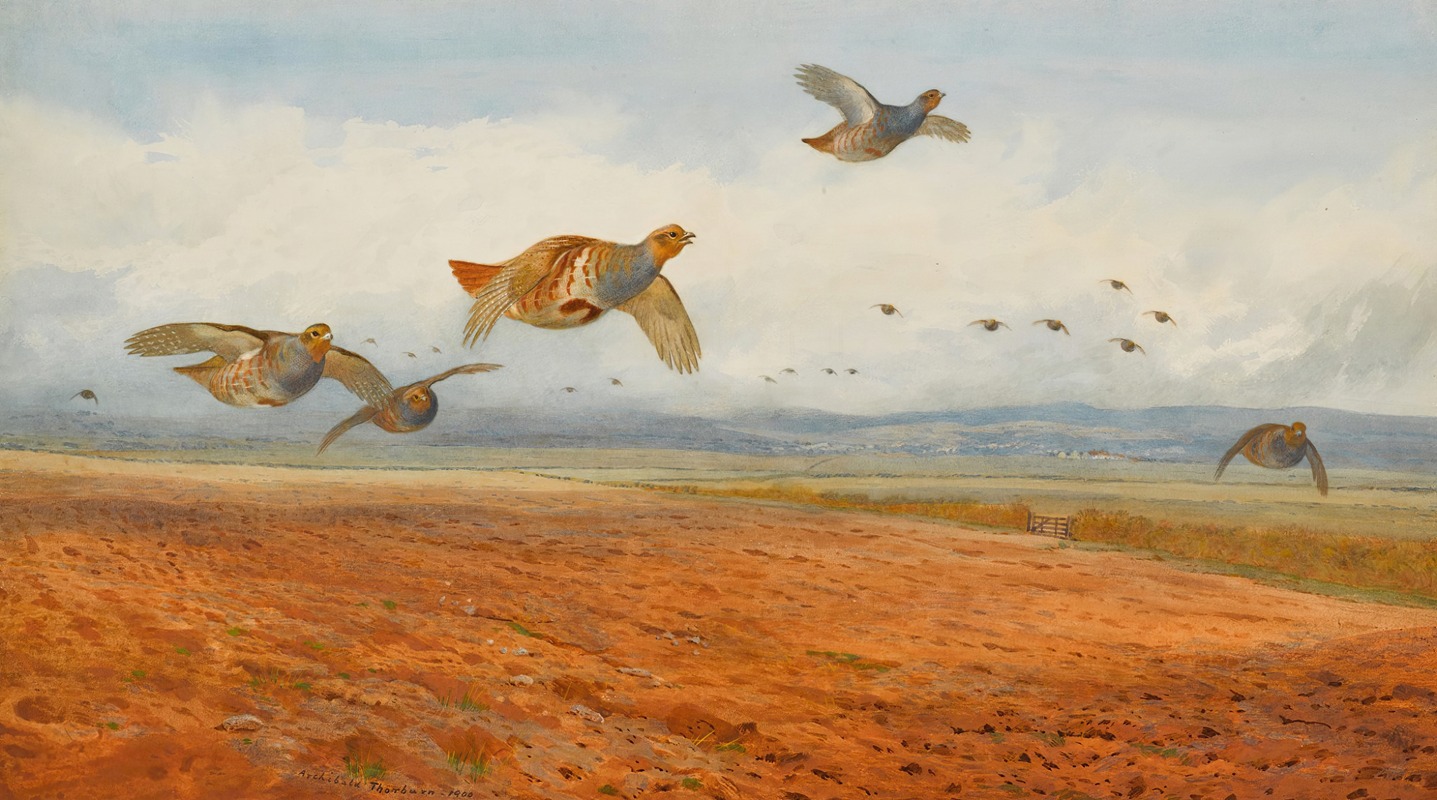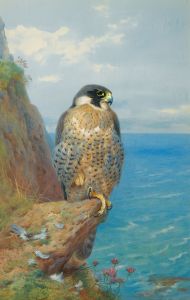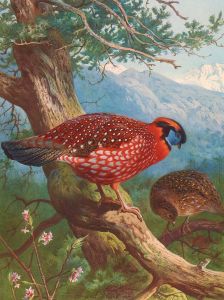
A Covey of Grey Partridge in Flight
A hand-painted replica of Archibald Thorburn’s masterpiece A Covey of Grey Partridge in Flight, meticulously crafted by professional artists to capture the true essence of the original. Each piece is created with museum-quality canvas and rare mineral pigments, carefully painted by experienced artists with delicate brushstrokes and rich, layered colors to perfectly recreate the texture of the original artwork. Unlike machine-printed reproductions, this hand-painted version brings the painting to life, infused with the artist’s emotions and skill in every stroke. Whether for personal collection or home decoration, it instantly elevates the artistic atmosphere of any space.
Archibald Thorburn (1860–1935) was a renowned Scottish artist and bird illustrator, celebrated for his detailed and lifelike depictions of wildlife, particularly birds. His work is characterized by its meticulous attention to detail and the ability to capture the essence of his subjects in their natural habitats. One of his notable works is "A Covey of Grey Partridge in Flight," which exemplifies his skill in portraying birds with both accuracy and artistic flair.
Thorburn was born in Lasswade, near Edinburgh, and developed an early interest in art and nature, likely influenced by his father, Robert Thorburn, who was a miniaturist painter. Archibald Thorburn's career took off when he began illustrating for Lord Lilford's "Coloured Figures of the Birds of the British Isles," a significant ornithological publication of the time. His contributions to this work established his reputation as a leading bird artist.
"A Covey of Grey Partridge in Flight" is a testament to Thorburn's ability to depict birds in motion, capturing the dynamic energy and grace of a group of grey partridges as they take to the air. The grey partridge, or Perdix perdix, is a ground-nesting bird native to Europe and parts of Asia, known for its distinctive plumage and social behavior, often seen in groups or "coveys."
Thorburn's painting showcases his mastery of watercolor, a medium he favored for its ability to convey the delicate textures and colors of feathers. In this work, he employs a naturalistic palette, using subtle earth tones and soft hues to render the partridges and their environment. The composition is carefully balanced, with the birds arranged in a way that suggests movement and depth, drawing the viewer's eye across the canvas.
The background of the painting is typically understated, a hallmark of Thorburn's style, allowing the viewer to focus on the birds themselves. This approach not only highlights the subjects but also places them within a believable natural setting, enhancing the realism of the scene. Thorburn often painted en plein air, observing his subjects in their natural habitats, which contributed to the authenticity and vitality of his work.
Thorburn's contributions to wildlife art were significant, and his works remain highly regarded by collectors and art enthusiasts. His paintings and illustrations have been featured in numerous exhibitions and publications, and his influence can be seen in the work of subsequent generations of wildlife artists. "A Covey of Grey Partridge in Flight" is just one example of his enduring legacy, reflecting both his artistic talent and his deep appreciation for the natural world.
Throughout his career, Thorburn remained dedicated to his craft, continuing to paint and illustrate until his death in 1935. His works are preserved in various collections, including those of the British Museum and the Natural History Museum in London, ensuring that his contributions to the field of wildlife art are recognized and appreciated by future generations.







